# Objective
- Prepass opaque and alpha mask are incorrectly sorted back to front. This slipped through review by accident.
## Solution
- Sort prepass opaque and alpha mask front to back
Huge thanks to @maniwani, @devil-ira, @hymm, @cart, @superdump and @jakobhellermann for the help with this PR.
# Objective
- Followup #6587.
- Minimal integration for the Stageless Scheduling RFC: https://github.com/bevyengine/rfcs/pull/45
## Solution
- [x] Remove old scheduling module
- [x] Migrate new methods to no longer use extension methods
- [x] Fix compiler errors
- [x] Fix benchmarks
- [x] Fix examples
- [x] Fix docs
- [x] Fix tests
## Changelog
### Added
- a large number of methods on `App` to work with schedules ergonomically
- the `CoreSchedule` enum
- `App::add_extract_system` via the `RenderingAppExtension` trait extension method
- the private `prepare_view_uniforms` system now has a public system set for scheduling purposes, called `ViewSet::PrepareUniforms`
### Removed
- stages, and all code that mentions stages
- states have been dramatically simplified, and no longer use a stack
- `RunCriteriaLabel`
- `AsSystemLabel` trait
- `on_hierarchy_reports_enabled` run criteria (now just uses an ad hoc resource checking run condition)
- systems in `RenderSet/Stage::Extract` no longer warn when they do not read data from the main world
- `RunCriteriaLabel`
- `transform_propagate_system_set`: this was a nonstandard pattern that didn't actually provide enough control. The systems are already `pub`: the docs have been updated to ensure that the third-party usage is clear.
### Changed
- `System::default_labels` is now `System::default_system_sets`.
- `App::add_default_labels` is now `App::add_default_sets`
- `CoreStage` and `StartupStage` enums are now `CoreSet` and `StartupSet`
- `App::add_system_set` was renamed to `App::add_systems`
- The `StartupSchedule` label is now defined as part of the `CoreSchedules` enum
- `.label(SystemLabel)` is now referred to as `.in_set(SystemSet)`
- `SystemLabel` trait was replaced by `SystemSet`
- `SystemTypeIdLabel<T>` was replaced by `SystemSetType<T>`
- The `ReportHierarchyIssue` resource now has a public constructor (`new`), and implements `PartialEq`
- Fixed time steps now use a schedule (`CoreSchedule::FixedTimeStep`) rather than a run criteria.
- Adding rendering extraction systems now panics rather than silently failing if no subapp with the `RenderApp` label is found.
- the `calculate_bounds` system, with the `CalculateBounds` label, is now in `CoreSet::Update`, rather than in `CoreSet::PostUpdate` before commands are applied.
- `SceneSpawnerSystem` now runs under `CoreSet::Update`, rather than `CoreStage::PreUpdate.at_end()`.
- `bevy_pbr::add_clusters` is no longer an exclusive system
- the top level `bevy_ecs::schedule` module was replaced with `bevy_ecs::scheduling`
- `tick_global_task_pools_on_main_thread` is no longer run as an exclusive system. Instead, it has been replaced by `tick_global_task_pools`, which uses a `NonSend` resource to force running on the main thread.
## Migration Guide
- Calls to `.label(MyLabel)` should be replaced with `.in_set(MySet)`
- Stages have been removed. Replace these with system sets, and then add command flushes using the `apply_system_buffers` exclusive system where needed.
- The `CoreStage`, `StartupStage, `RenderStage` and `AssetStage` enums have been replaced with `CoreSet`, `StartupSet, `RenderSet` and `AssetSet`. The same scheduling guarantees have been preserved.
- Systems are no longer added to `CoreSet::Update` by default. Add systems manually if this behavior is needed, although you should consider adding your game logic systems to `CoreSchedule::FixedTimestep` instead for more reliable framerate-independent behavior.
- Similarly, startup systems are no longer part of `StartupSet::Startup` by default. In most cases, this won't matter to you.
- For example, `add_system_to_stage(CoreStage::PostUpdate, my_system)` should be replaced with
- `add_system(my_system.in_set(CoreSet::PostUpdate)`
- When testing systems or otherwise running them in a headless fashion, simply construct and run a schedule using `Schedule::new()` and `World::run_schedule` rather than constructing stages
- Run criteria have been renamed to run conditions. These can now be combined with each other and with states.
- Looping run criteria and state stacks have been removed. Use an exclusive system that runs a schedule if you need this level of control over system control flow.
- For app-level control flow over which schedules get run when (such as for rollback networking), create your own schedule and insert it under the `CoreSchedule::Outer` label.
- Fixed timesteps are now evaluated in a schedule, rather than controlled via run criteria. The `run_fixed_timestep` system runs this schedule between `CoreSet::First` and `CoreSet::PreUpdate` by default.
- Command flush points introduced by `AssetStage` have been removed. If you were relying on these, add them back manually.
- Adding extract systems is now typically done directly on the main app. Make sure the `RenderingAppExtension` trait is in scope, then call `app.add_extract_system(my_system)`.
- the `calculate_bounds` system, with the `CalculateBounds` label, is now in `CoreSet::Update`, rather than in `CoreSet::PostUpdate` before commands are applied. You may need to order your movement systems to occur before this system in order to avoid system order ambiguities in culling behavior.
- the `RenderLabel` `AppLabel` was renamed to `RenderApp` for clarity
- `App::add_state` now takes 0 arguments: the starting state is set based on the `Default` impl.
- Instead of creating `SystemSet` containers for systems that run in stages, simply use `.on_enter::<State::Variant>()` or its `on_exit` or `on_update` siblings.
- `SystemLabel` derives should be replaced with `SystemSet`. You will also need to add the `Debug`, `PartialEq`, `Eq`, and `Hash` traits to satisfy the new trait bounds.
- `with_run_criteria` has been renamed to `run_if`. Run criteria have been renamed to run conditions for clarity, and should now simply return a bool.
- States have been dramatically simplified: there is no longer a "state stack". To queue a transition to the next state, call `NextState::set`
## TODO
- [x] remove dead methods on App and World
- [x] add `App::add_system_to_schedule` and `App::add_systems_to_schedule`
- [x] avoid adding the default system set at inappropriate times
- [x] remove any accidental cycles in the default plugins schedule
- [x] migrate benchmarks
- [x] expose explicit labels for the built-in command flush points
- [x] migrate engine code
- [x] remove all mentions of stages from the docs
- [x] verify docs for States
- [x] fix uses of exclusive systems that use .end / .at_start / .before_commands
- [x] migrate RenderStage and AssetStage
- [x] migrate examples
- [x] ensure that transform propagation is exported in a sufficiently public way (the systems are already pub)
- [x] ensure that on_enter schedules are run at least once before the main app
- [x] re-enable opt-in to execution order ambiguities
- [x] revert change to `update_bounds` to ensure it runs in `PostUpdate`
- [x] test all examples
- [x] unbreak directional lights
- [x] unbreak shadows (see 3d_scene, 3d_shape, lighting, transparaency_3d examples)
- [x] game menu example shows loading screen and menu simultaneously
- [x] display settings menu is a blank screen
- [x] `without_winit` example panics
- [x] ensure all tests pass
- [x] SubApp doc test fails
- [x] runs_spawn_local tasks fails
- [x] [Fix panic_when_hierachy_cycle test hanging](https://github.com/alice-i-cecile/bevy/pull/120)
## Points of Difficulty and Controversy
**Reviewers, please give feedback on these and look closely**
1. Default sets, from the RFC, have been removed. These added a tremendous amount of implicit complexity and result in hard to debug scheduling errors. They're going to be tackled in the form of "base sets" by @cart in a followup.
2. The outer schedule controls which schedule is run when `App::update` is called.
3. I implemented `Label for `Box<dyn Label>` for our label types. This enables us to store schedule labels in concrete form, and then later run them. I ran into the same set of problems when working with one-shot systems. We've previously investigated this pattern in depth, and it does not appear to lead to extra indirection with nested boxes.
4. `SubApp::update` simply runs the default schedule once. This sucks, but this whole API is incomplete and this was the minimal changeset.
5. `time_system` and `tick_global_task_pools_on_main_thread` no longer use exclusive systems to attempt to force scheduling order
6. Implemetnation strategy for fixed timesteps
7. `AssetStage` was migrated to `AssetSet` without reintroducing command flush points. These did not appear to be used, and it's nice to remove these bottlenecks.
8. Migration of `bevy_render/lib.rs` and pipelined rendering. The logic here is unusually tricky, as we have complex scheduling requirements.
## Future Work (ideally before 0.10)
- Rename schedule_v3 module to schedule or scheduling
- Add a derive macro to states, and likely a `EnumIter` trait of some form
- Figure out what exactly to do with the "systems added should basically work by default" problem
- Improve ergonomics for working with fixed timesteps and states
- Polish FixedTime API to match Time
- Rebase and merge #7415
- Resolve all internal ambiguities (blocked on better tools, especially #7442)
- Add "base sets" to replace the removed default sets.
# Objective
In simple cases we might want to derive the `ExtractComponent` trait.
This adds symmetry to the existing `ExtractResource` derive.
## Solution
Add an implementation of `#[derive(ExtractComponent)]`.
The implementation is adapted from the existing `ExtractResource` derive macro.
Additionally, there is an attribute called `extract_component_filter`. This allows specifying a query filter type used when extracting.
If not specified, no filter (equal to `()`) is used.
So:
```rust
#[derive(Component, Clone, ExtractComponent)]
#[extract_component_filter(With<Fuel>)]
pub struct Car {
pub wheels: usize,
}
```
would expand to (a bit cleaned up here):
```rust
impl ExtractComponent for Car
{
type Query = &'static Self;
type Filter = With<Fuel>;
type Out = Self;
fn extract_component(item: QueryItem<'_, Self::Query>) -> Option<Self::Out> {
Some(item.clone())
}
}
```
---
## Changelog
- Added the ability to `#[derive(ExtractComponent)]` with an optional filter.
# Objective
Update Bevy to wgpu 0.15.
## Changelog
- Update to wgpu 0.15, wgpu-hal 0.15.1, and naga 0.11
- Users can now use the [DirectX Shader Compiler](https://github.com/microsoft/DirectXShaderCompiler) (DXC) on Windows with DX12 for faster shader compilation and ShaderModel 6.0+ support (requires `dxcompiler.dll` and `dxil.dll`, which are included in DXC downloads from [here](https://github.com/microsoft/DirectXShaderCompiler/releases/latest))
## Migration Guide
### WGSL Top-Level `let` is now `const`
All top level constants are now declared with `const`, catching up with the wgsl spec.
`let` is no longer allowed at the global scope, only within functions.
```diff
-let SOME_CONSTANT = 12.0;
+const SOME_CONSTANT = 12.0;
```
#### `TextureDescriptor` and `SurfaceConfiguration` now requires a `view_formats` field
The new `view_formats` field in the `TextureDescriptor` is used to specify a list of formats the texture can be re-interpreted to in a texture view. Currently only changing srgb-ness is allowed (ex. `Rgba8Unorm` <=> `Rgba8UnormSrgb`). You should set `view_formats` to `&[]` (empty) unless you have a specific reason not to.
#### The DirectX Shader Compiler (DXC) is now supported on DX12
DXC is now the default shader compiler when using the DX12 backend. DXC is Microsoft's replacement for their legacy FXC compiler, and is faster, less buggy, and allows for modern shader features to be used (ShaderModel 6.0+). DXC requires `dxcompiler.dll` and `dxil.dll` to be available, otherwise it will log a warning and fall back to FXC.
You can get `dxcompiler.dll` and `dxil.dll` by downloading the latest release from [Microsoft's DirectXShaderCompiler github repo](https://github.com/microsoft/DirectXShaderCompiler/releases/latest) and copying them into your project's root directory. These must be included when you distribute your Bevy game/app/etc if you plan on supporting the DX12 backend and are using DXC.
`WgpuSettings` now has a `dx12_shader_compiler` field which can be used to choose between either FXC or DXC (if you pass None for the paths for DXC, it will check for the .dlls in the working directory).
Co-authored-by: Robert Swain <robert.swain@gmail.com>
# Objective
Implements cascaded shadow maps for directional lights, which produces better quality shadows without needing excessively large shadow maps.
Fixes#3629
Before
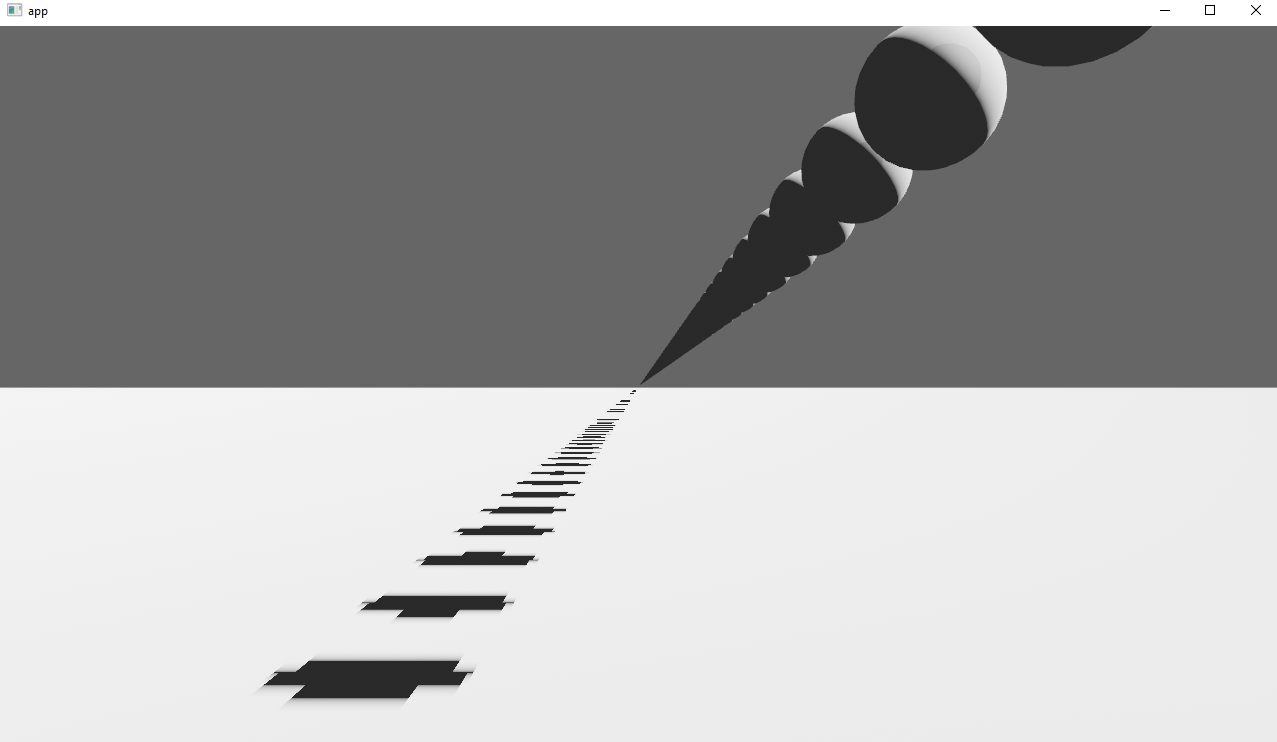
After
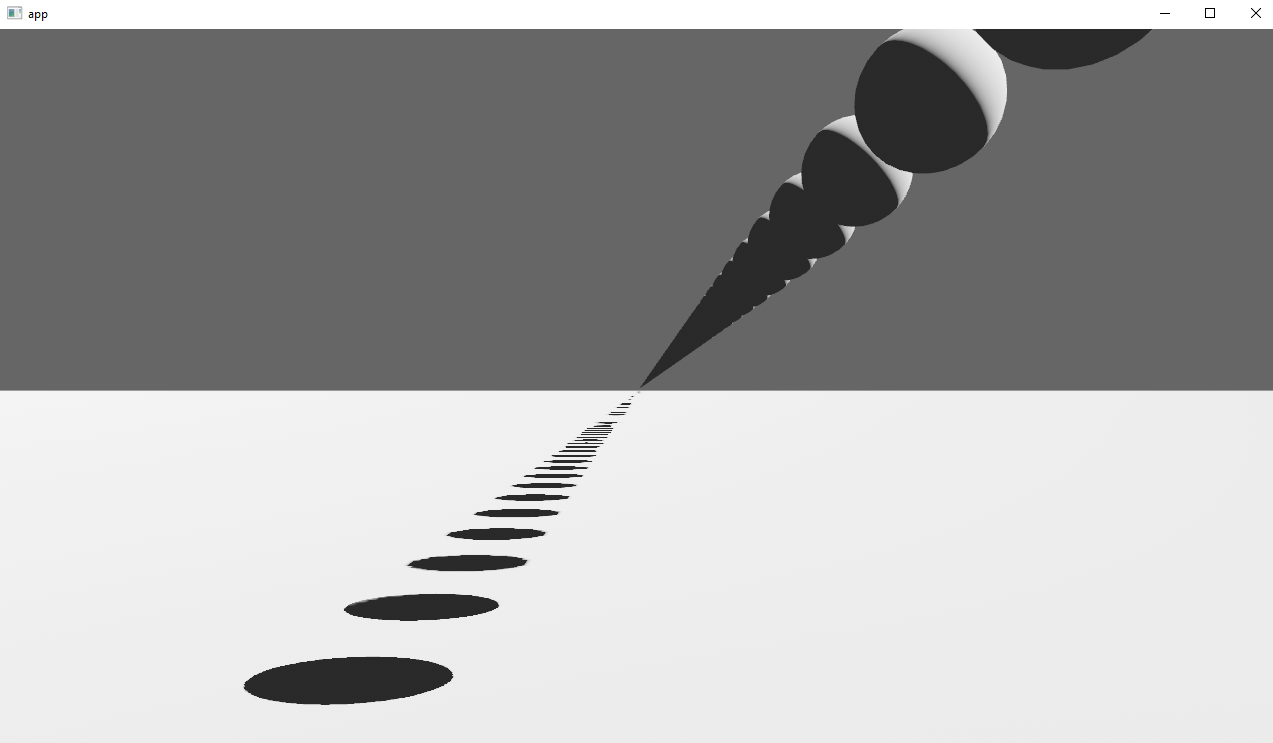
## Solution
Rather than rendering a single shadow map for directional light, the view frustum is divided into a series of cascades, each of which gets its own shadow map. The correct cascade is then sampled for shadow determination.
---
## Changelog
Directional lights now use cascaded shadow maps for improved shadow quality.
## Migration Guide
You no longer have to manually specify a `shadow_projection` for a directional light, and these settings should be removed. If customization of how cascaded shadow maps work is desired, modify the `CascadeShadowConfig` component instead.
# Objective
- The functions added to utils.wgsl by the prepass assume that mesh_view_bindings are present, which isn't always the case
- Fixes https://github.com/bevyengine/bevy/issues/7353
## Solution
- Move these functions to their own `prepass_utils.wgsl` file
Co-authored-by: IceSentry <IceSentry@users.noreply.github.com>
# Objective
`RenderContext`, the core abstraction for running the render graph, currently only supports recording one `CommandBuffer` across the entire render graph. This means the entire buffer must be recorded sequentially, usually via the render graph itself. This prevents parallelization and forces users to only encode their commands in the render graph.
## Solution
Allow `RenderContext` to store a `Vec<CommandBuffer>` that it progressively appends to. By default, the context will not have a command encoder, but will create one as soon as either `begin_tracked_render_pass` or the `command_encoder` accesor is first called. `RenderContext::add_command_buffer` allows users to interrupt the current command encoder, flush it to the vec, append a user-provided `CommandBuffer` and reset the command encoder to start a new buffer. Users or the render graph will call `RenderContext::finish` to retrieve the series of buffers for submitting to the queue.
This allows users to encode their own `CommandBuffer`s outside of the render graph, potentially in different threads, and store them in components or resources.
Ideally, in the future, the core pipeline passes can run in `RenderStage::Render` systems and end up saving the completed command buffers to either `Commands` or a field in `RenderPhase`.
## Alternatives
The alternative is to use to use wgpu's `RenderBundle`s, which can achieve similar results; however it's not universally available (no OpenGL, WebGL, and DX11).
---
## Changelog
Added: `RenderContext::new`
Added: `RenderContext::add_command_buffer`
Added: `RenderContext::finish`
Changed: `RenderContext::render_device` is now private. Use the accessor `RenderContext::render_device()` instead.
Changed: `RenderContext::command_encoder` is now private. Use the accessor `RenderContext::command_encoder()` instead.
Changed: `RenderContext` now supports adding external `CommandBuffer`s for inclusion into the render graphs. These buffers can be encoded outside of the render graph (i.e. in a system).
## Migration Guide
`RenderContext`'s fields are now private. Use the accessors on `RenderContext` instead, and construct it with `RenderContext::new`.
# Objective
Fixes#6931
Continues #6954 by squashing `Msaa` to a flat enum
Helps out #7215
# Solution
```
pub enum Msaa {
Off = 1,
#[default]
Sample4 = 4,
}
```
# Changelog
- Modified
- `Msaa` is now enum
- Defaults to 4 samples
- Uses `.samples()` method to get the sample number as `u32`
# Migration Guide
```
let multi = Msaa { samples: 4 }
// is now
let multi = Msaa::Sample4
multi.samples
// is now
multi.samples()
```
Co-authored-by: Sjael <jakeobrien44@gmail.com>
# Objective
- Add a configurable prepass
- A depth prepass is useful for various shader effects and to reduce overdraw. It can be expansive depending on the scene so it's important to be able to disable it if you don't need any effects that uses it or don't suffer from excessive overdraw.
- The goal is to eventually use it for things like TAA, Ambient Occlusion, SSR and various other techniques that can benefit from having a prepass.
## Solution
The prepass node is inserted before the main pass. It runs for each `Camera3d` with a prepass component (`DepthPrepass`, `NormalPrepass`). The presence of one of those components is used to determine which textures are generated in the prepass. When any prepass is enabled, the depth buffer generated will be used by the main pass to reduce overdraw.
The prepass runs for each `Material` created with the `MaterialPlugin::prepass_enabled` option set to `true`. You can overload the shader used by the prepass by using `Material::prepass_vertex_shader()` and/or `Material::prepass_fragment_shader()`. It will also use the `Material::specialize()` for more advanced use cases. It is enabled by default on all materials.
The prepass works on opaque materials and materials using an alpha mask. Transparent materials are ignored.
The `StandardMaterial` overloads the prepass fragment shader to support alpha mask and normal maps.
---
## Changelog
- Add a new `PrepassNode` that runs before the main pass
- Add a `PrepassPlugin` to extract/prepare/queue the necessary data
- Add a `DepthPrepass` and `NormalPrepass` component to control which textures will be created by the prepass and available in later passes.
- Add a new `prepass_enabled` flag to the `MaterialPlugin` that will control if a material uses the prepass or not.
- Add a new `prepass_enabled` flag to the `PbrPlugin` to control if the StandardMaterial uses the prepass. Currently defaults to false.
- Add `Material::prepass_vertex_shader()` and `Material::prepass_fragment_shader()` to control the prepass from the `Material`
## Notes
In bevy's sample 3d scene, the performance is actually worse when enabling the prepass, but on more complex scenes the performance is generally better. I would like more testing on this, but @DGriffin91 has reported a very noticeable improvements in some scenes.
The prepass is also used by @JMS55 for TAA and GTAO
discord thread: <https://discord.com/channels/691052431525675048/1011624228627419187>
This PR was built on top of the work of multiple people
Co-Authored-By: @superdump
Co-Authored-By: @robtfm
Co-Authored-By: @JMS55
Co-authored-by: Charles <IceSentry@users.noreply.github.com>
Co-authored-by: JMS55 <47158642+JMS55@users.noreply.github.com>
# Objective
fix bloom when used on a camera with a viewport specified
## Solution
- pass viewport into the prefilter shader, and use it to read from the correct section of the original rendered screen
- don't apply viewport for the intermediate bloom passes, only for the final blend output
# Objective
- Allow rendering queue systems to use a `Res<PipelineCache>` even for queueing up new rendering pipelines. This is part of unblocking parallel execution queue systems.
## Solution
- Make `PipelineCache` internally mutable w.r.t to queueing new pipelines. Pipelines are no longer immediately updated into the cache state, but rather queued into a Vec. The Vec of pending new pipelines is then later processed at the same time we actually create the queued pipelines on the GPU device.
---
## Changelog
`PipelineCache` no longer requires mutable access in order to queue render / compute pipelines.
## Migration Guide
* Most usages of `resource_mut::<PipelineCache>` and `ResMut<PipelineCache>` can be changed to `resource::<PipelineCache>` and `Res<PipelineCache>` as long as they don't use any methods requiring mutability - the only public method requiring it is `process_queue`.
# Objective
Speed up the render phase for rendering.
## Solution
- Follow up #6988 and make the internals of atomic IDs `NonZeroU32`. This niches the `Option`s of the IDs in draw state, which reduces the size and branching behavior when evaluating for equality.
- Require `&RenderDevice` to get the device's `Limits` when initializing a `TrackedRenderPass` to preallocate the bind groups and vertex buffer state in `DrawState`, this removes the branch on needing to resize those `Vec`s.
## Performance
This produces a similar speed up akin to that of #6885. This shows an approximate 6% speed up in `main_opaque_pass_3d` on `many_foxes` (408.79 us -> 388us). This should be orthogonal to the gains seen there.
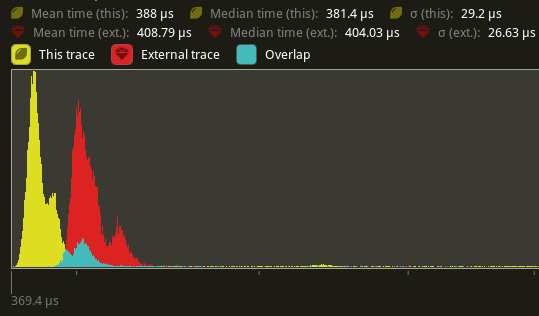
---
## Changelog
Added: `RenderContext::begin_tracked_render_pass`.
Changed: `TrackedRenderPass` now requires a `&RenderDevice` on construction.
Removed: `bevy_render::render_phase::DrawState`. It was not usable in any form outside of `bevy_render`.
## Migration Guide
TODO
# Objective
Speed up the render phase of rendering. Simplify the trait structure for render commands.
## Solution
- Merge `EntityPhaseItem` into `PhaseItem` (`EntityPhaseItem::entity` -> `PhaseItem::entity`)
- Merge `EntityRenderCommand` into `RenderCommand`.
- Add two associated types to `RenderCommand`: `RenderCommand::ViewWorldQuery` and `RenderCommand::WorldQuery`.
- Use the new associated types to construct two `QueryStates`s for `RenderCommandState`.
- Hoist any `SQuery<T>` fetches in `EntityRenderCommand`s into the aformentioned two queries. Batch fetch them all at once.
## Performance
`main_opaque_pass_3d` is slightly faster on `many_foxes` (427.52us -> 401.15us)
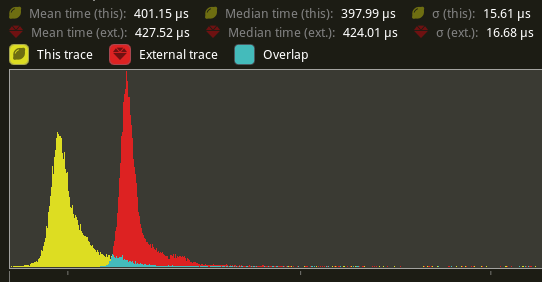
The shadow pass node is also slightly faster (344.52 -> 338.24us)
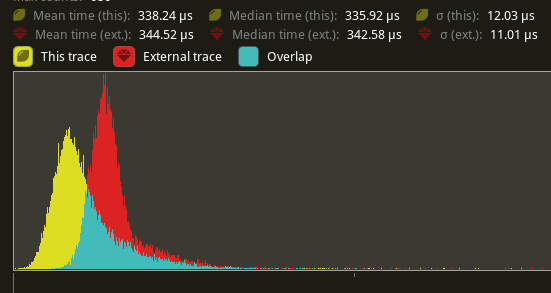
## Future Work
- Can we hoist the view level queries out of the core loop?
---
## Changelog
Added: `PhaseItem::entity`
Added: `RenderCommand::ViewWorldQuery` associated type.
Added: `RenderCommand::ItemorldQuery` associated type.
Added: `Draw<T>::prepare` optional trait function.
Removed: `EntityPhaseItem` trait
## Migration Guide
TODO
# Objective
- The recently merged PR #7013 does not allow multiple `RenderPhase`s to share the same `RenderPass`.
- Due to the introduced overhead we want to minimize the number of `RenderPass`es recorded during each frame.
## Solution
- Take a constructed `TrackedRenderPass` instead of a `RenderPassDiscriptor` as a parameter to the `RenderPhase::render` method.
---
## Changelog
To enable multiple `RenderPhases` to share the same `TrackedRenderPass`,
the `RenderPhase::render` signature has changed.
```rust
pub fn render<'w>(
&self,
render_pass: &mut TrackedRenderPass<'w>,
world: &'w World,
view: Entity)
```
Co-authored-by: Kurt Kühnert <51823519+kurtkuehnert@users.noreply.github.com>
# Objective
All `RenderPhases` follow the same render procedure.
The same code is duplicated multiple times across the codebase.
## Solution
I simply extracted this code into a method on the `RenderPhase`.
This avoids code duplication and makes setting up new `RenderPhases` easier.
---
## Changelog
### Changed
You can now set up the rendering code of a `RenderPhase` directly using the `RenderPhase::render` method, instead of implementing it manually in your render graph node.
# Objective
- shaders defs can now have a `bool` or `int` value
- `#if SHADER_DEF <operator> 3`
- ok if `SHADER_DEF` is defined, has the correct type and pass the comparison
- `==`, `!=`, `>=`, `>`, `<`, `<=` supported
- `#SHADER_DEF` or `#{SHADER_DEF}`
- will be replaced by the value in the shader code
---
## Migration Guide
- replace `shader_defs.push(String::from("NAME"));` by `shader_defs.push("NAME".into());`
- if you used shader def `NO_STORAGE_BUFFERS_SUPPORT`, check how `AVAILABLE_STORAGE_BUFFER_BINDINGS` is now used in Bevy default shaders
# Objective
`add_node_edge` and `add_slot_edge` are fallible methods, but are always used with `.unwrap()`.
`input_node` is often unwrapped as well.
This points to having an infallible behaviour as default, with an alternative fallible variant if needed.
Improves readability and ergonomics.
## Solution
- Change `add_node_edge` and `add_slot_edge` to panic on error.
- Change `input_node` to panic on `None`.
- Add `try_add_node_edge` and `try_add_slot_edge` in case fallible methods are needed.
- Add `get_input_node` to still be able to get an `Option`.
---
## Changelog
### Added
- `try_add_node_edge`
- `try_add_slot_edge`
- `get_input_node`
### Changed
- `add_node_edge` is now infallible (panics on error)
- `add_slot_edge` is now infallible (panics on error)
- `input_node` now panics on `None`
## Migration Guide
Remove `.unwrap()` from `add_node_edge` and `add_slot_edge`.
For cases where the error was handled, use `try_add_node_edge` and `try_add_slot_edge` instead.
Remove `.unwrap()` from `input_node`.
For cases where the option was handled, use `get_input_node` instead.
Co-authored-by: Torstein Grindvik <52322338+torsteingrindvik@users.noreply.github.com>
# Objective
Allow more use cases where the user may benefit from both `ExtractComponentPlugin` _and_ `UniformComponentPlugin`.
## Solution
Add an associated type to `ExtractComponent` in order to allow specifying the output component (or bundle).
Make `extract_component` return an `Option<_>` such that components can be extracted only when needed.
What problem does this solve?
`ExtractComponentPlugin` allows extracting components, but currently the output type is the same as the input.
This means that use cases such as having a settings struct which turns into a uniform is awkward.
For example we might have:
```rust
struct MyStruct {
enabled: bool,
val: f32
}
struct MyStructUniform {
val: f32
}
```
With the new approach, we can extract `MyStruct` only when it is enabled, and turn it into its related uniform.
This chains well with `UniformComponentPlugin`.
The user may then:
```rust
app.add_plugin(ExtractComponentPlugin::<MyStruct>::default());
app.add_plugin(UniformComponentPlugin::<MyStructUniform>::default());
```
This then saves the user a fair amount of boilerplate.
## Changelog
### Changed
- `ExtractComponent` can specify output type, and outputting is optional.
Co-authored-by: Torstein Grindvik <52322338+torsteingrindvik@users.noreply.github.com>
# Objective
Make core pipeline graphic nodes, including `BloomNode`, `FxaaNode`, `TonemappingNode` and `UpscalingNode` public.
This will allow users to construct their own render graphs with these build-in nodes.
## Solution
Make them public.
Also put node names into bevy's core namespace (`core_2d::graph::node`, `core_3d::graph::node`) which makes them consistent.
# Objective
- Closes#5262
- Fix color banding caused by quantization.
## Solution
- Adds dithering to the tonemapping node from #3425.
- This is inspired by Godot's default "debanding" shader: https://gist.github.com/belzecue/
- Unlike Godot:
- debanding happens after tonemapping. My understanding is that this is preferred, because we are running the debanding at the last moment before quantization (`[f32, f32, f32, f32]` -> `f32`). This ensures we aren't biasing the dithering strength by applying it in a different (linear) color space.
- This code instead uses and reference the origin source, Valve at GDC 2015
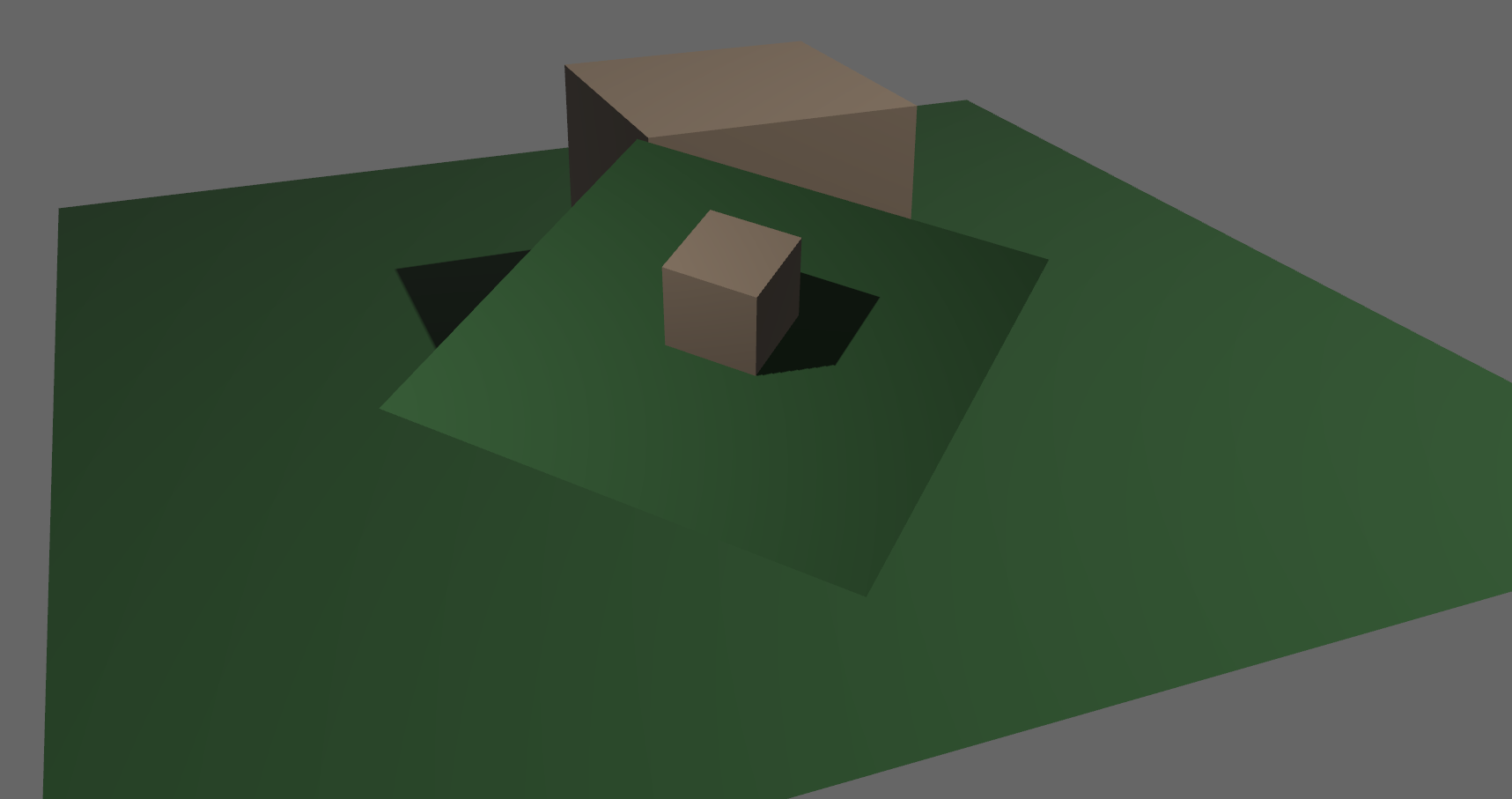
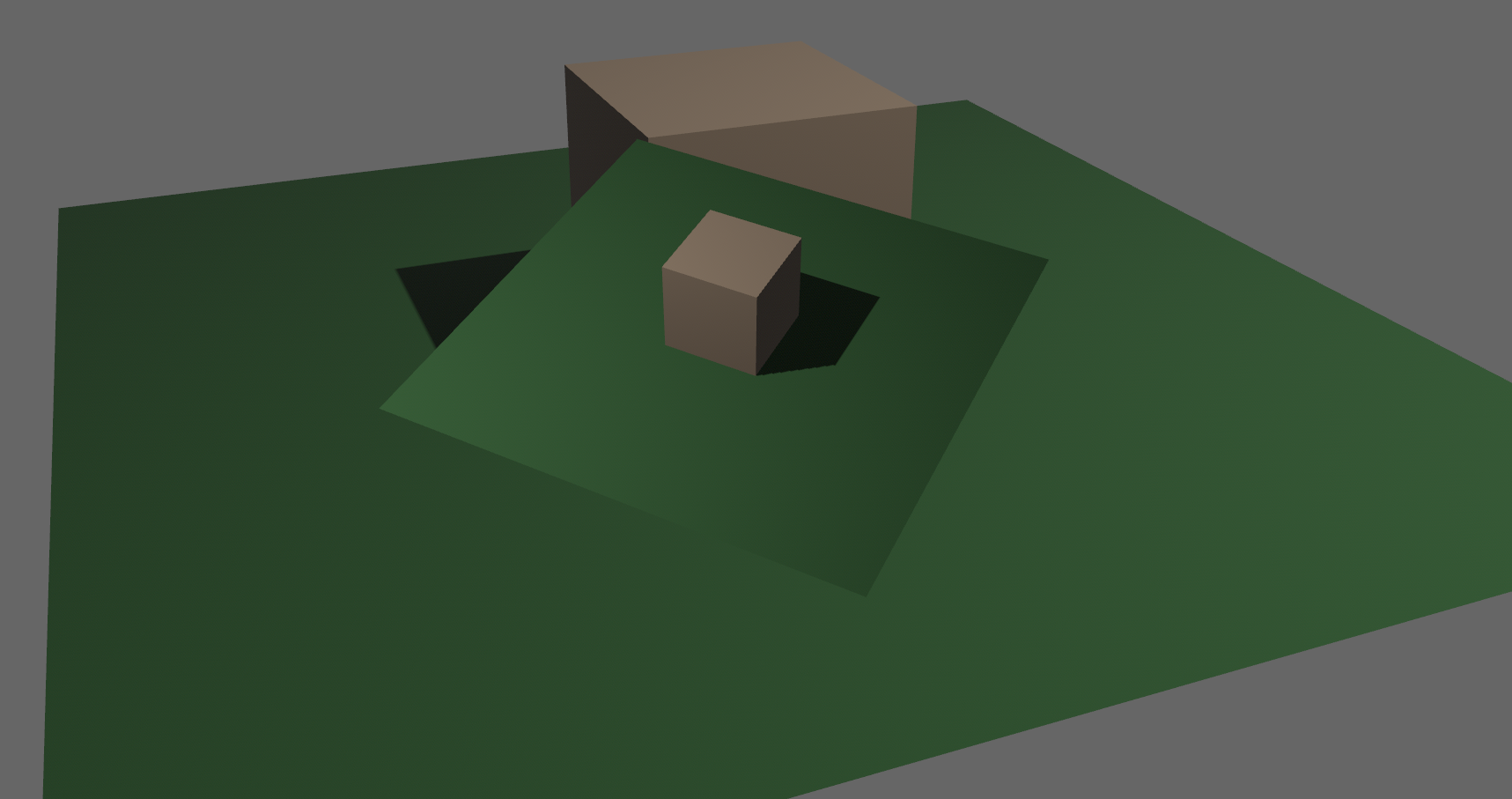
## Additional Notes
Real time rendering to standard dynamic range outputs is limited to 8 bits of depth per color channel. Internally we keep everything in full 32-bit precision (`vec4<f32>`) inside passes and 16-bit between passes until the image is ready to be displayed, at which point the GPU implicitly converts our `vec4<f32>` into a single 32bit value per pixel, with each channel (rgba) getting 8 of those 32 bits.
### The Problem
8 bits of color depth is simply not enough precision to make each step invisible - we only have 256 values per channel! Human vision can perceive steps in luma to about 14 bits of precision. When drawing a very slight gradient, the transition between steps become visible because with a gradient, neighboring pixels will all jump to the next "step" of precision at the same time.
### The Solution
One solution is to simply output in HDR - more bits of color data means the transition between bands will become smaller. However, not everyone has hardware that supports 10+ bit color depth. Additionally, 10 bit color doesn't even fully solve the issue, banding will result in coherent bands on shallow gradients, but the steps will be harder to perceive.
The solution in this PR adds noise to the signal before it is "quantized" or resampled from 32 to 8 bits. Done naively, it's easy to add unneeded noise to the image. To ensure dithering is correct and absolutely minimal, noise is adding *within* one step of the output color depth. When converting from the 32bit to 8bit signal, the value is rounded to the nearest 8 bit value (0 - 255). Banding occurs around the transition from one value to the next, let's say from 50-51. Dithering will never add more than +/-0.5 bits of noise, so the pixels near this transition might round to 50 instead of 51 but will never round more than one step. This means that the output image won't have excess variance:
- in a gradient from 49 to 51, there will be a step between each band at 49, 50, and 51.
- Done correctly, the modified image of this gradient will never have a adjacent pixels more than one step (0-255) from each other.
- I.e. when scanning across the gradient you should expect to see:
```
|-band-| |-band-| |-band-|
Baseline: 49 49 49 50 50 50 51 51 51
Dithered: 49 50 49 50 50 51 50 51 51
Dithered (wrong): 49 50 51 49 50 51 49 51 50
```


You can see from above how correct dithering "fuzzes" the transition between bands to reduce distinct steps in color, without adding excess noise.
### HDR
The previous section (and this PR) assumes the final output is to an 8-bit texture, however this is not always the case. When Bevy adds HDR support, the dithering code will need to take the per-channel depth into account instead of assuming it to be 0-255. Edit: I talked with Rob about this and it seems like the current solution is okay. We may need to revisit once we have actual HDR final image output.
---
## Changelog
### Added
- All pipelines now support deband dithering. This is enabled by default in 3D, and can be toggled in the `Tonemapping` component in camera bundles. Banding is a graphical artifact created when the rendered image is crunched from high precision (f32 per color channel) down to the final output (u8 per channel in SDR). This results in subtle gradients becoming blocky due to the reduced color precision. Deband dithering applies a small amount of noise to the signal before it is "crunched", which breaks up the hard edges of blocks (bands) of color. Note that this does not add excess noise to the image, as the amount of noise is less than a single step of a color channel - just enough to break up the transition between color blocks in a gradient.
Co-authored-by: Carter Anderson <mcanders1@gmail.com>
# Objective
- it would be useful to inspect these structs using reflection
## Solution
- derive and register reflect
- Note that `#[reflect(Component)]` requires `Default` (or `FromWorld`) until #6060, so I implemented `Default` for `Tonemapping` with `is_enabled: false`
# Objective
Bevy UI (and third party plugins) currently have no good way to position themselves after all post processing effects. They currently use the tonemapping node, but this is not adequate if there is anything after tonemapping (such as FXAA).
## Solution
Add a logical `END_MAIN_PASS_POST_PROCESSING` RenderGraph node that main pass post processing effects position themselves before, and things like UIs can position themselves after.
Co-authored-by: JMS55 <47158642+JMS55@users.noreply.github.com>
Co-authored-by: Carter Anderson <mcanders1@gmail.com>
Co-authored-by: DGriffin91 <github@dgdigital.net>
# Objective
- Adds a bloom pass for HDR-enabled Camera3ds.
- Supersedes (and all credit due to!) https://github.com/bevyengine/bevy/pull/3430 and https://github.com/bevyengine/bevy/pull/2876
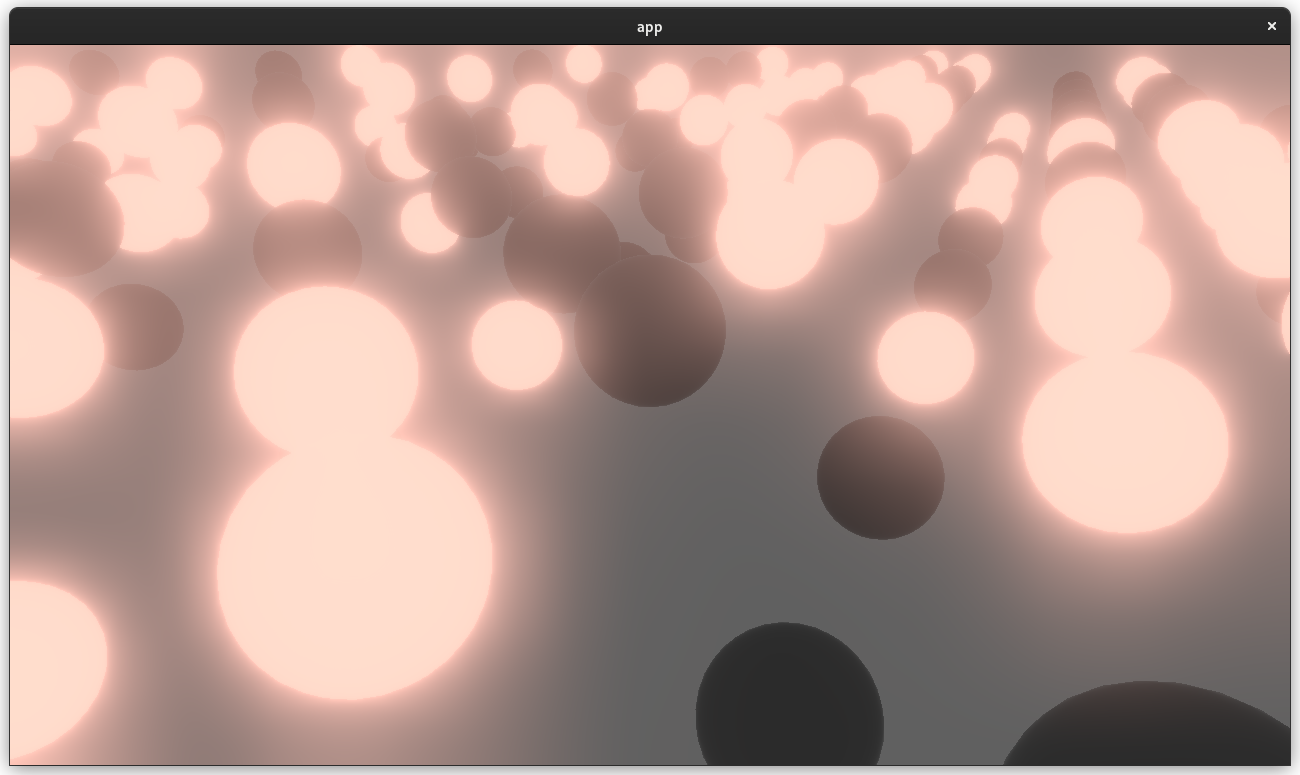
## Solution
- A threshold is applied to isolate emissive samples, and then a series of downscale and upscaling passes are applied and composited together.
- Bloom is applied to 2d or 3d Cameras with hdr: true and a BloomSettings component.
---
## Changelog
- Added a `core_pipeline::bloom::BloomSettings` component.
- Added `BloomNode` that runs between the main pass and tonemapping.
- Added a `BloomPlugin` that is loaded as part of CorePipelinePlugin.
- Added a bloom example project.
Co-authored-by: JMS55 <47158642+JMS55@users.noreply.github.com>
Co-authored-by: Carter Anderson <mcanders1@gmail.com>
Co-authored-by: DGriffin91 <github@dgdigital.net>
# Objective
Replace `WorldQueryGats` trait with actual gats
## Solution
Replace `WorldQueryGats` trait with actual gats
---
## Changelog
- Replaced `WorldQueryGats` trait with actual gats
## Migration Guide
- Replace usage of `WorldQueryGats` assoc types with the actual gats on `WorldQuery` trait
This reverts commit 53d387f340.
# Objective
Reverts #6448. This didn't have the intended effect: we're now getting bevy::prelude shown in the docs again.
Co-authored-by: Alejandro Pascual <alejandro.pascual.pozo@gmail.com>
# Objective
- Right now re-exports are completely hidden in prelude docs.
- Fixes#6433
## Solution
- We could show the re-exports without inlining their documentation.
# Objective
- Add post processing passes for FXAA (Fast Approximate Anti-Aliasing)
- Add example comparing MSAA and FXAA
## Solution
When the FXAA plugin is added, passes for FXAA are inserted between the main pass and the tonemapping pass. Supports using either HDR or LDR output from the main pass.
---
## Changelog
- Add a new FXAANode that runs after the main pass when the FXAA plugin is added.
Co-authored-by: Carter Anderson <mcanders1@gmail.com>
# Objective
Post processing effects cannot read and write to the same texture. Currently they must own their own intermediate texture and redundantly copy from that back to the main texture. This is very inefficient.
Additionally, working with ViewTarget is more complicated than it needs to be, especially when working with HDR textures.
## Solution
`ViewTarget` now stores two copies of the "main texture". It uses an atomic value to track which is currently the "main texture" (this interior mutability is necessary to accommodate read-only RenderGraph execution).
`ViewTarget` now has a `post_process_write` method, which will return a source and destination texture. Each call to this method will flip between the two copies of the "main texture".
```rust
let post_process = render_target.post_process_write();
let source_texture = post_process.source;
let destination_texture = post_process.destination;
```
The caller _must_ read from the source texture and write to the destination texture, as it is assumed that the destination texture will become the new "main texture".
For simplicity / understandability `ViewTarget` is now a flat type. "hdr-ness" is a property of the `TextureFormat`. The internals are fully private in the interest of providing simple / consistent apis. Developers can now easily access the main texture by calling `view_target.main_texture()`.
HDR ViewTargets no longer have an "ldr texture" with `TextureFormat::bevy_default`. They _only_ have their two "hdr" textures. This simplifies the mental model. All we have is the "currently active hdr texture" and the "other hdr texture", which we flip between for post processing effects.
The tonemapping node has been rephrased to use this "post processing pattern". The blit pass has been removed, and it now only runs a pass when HDR is enabled. Notably, both the input and output texture are assumed to be HDR. This means that tonemapping behaves just like any other "post processing effect". It could theoretically be moved anywhere in the "effect chain" and continue to work.
In general, I think these changes will make the lives of people making post processing effects much easier. And they better position us to start building higher level / more structured "post processing effect stacks".
---
## Changelog
- `ViewTarget` now stores two copies of the "main texture". Calling `ViewTarget::post_process_write` will flip between copies of the main texture.
# Objective
Currently, Bevy only supports rendering to the current "surface texture format". This means that "render to texture" scenarios must use the exact format the primary window's surface uses, or Bevy will crash. This is even harder than it used to be now that we detect preferred surface formats at runtime instead of using hard coded BevyDefault values.
## Solution
1. Look up and store each window surface's texture format alongside other extracted window information
2. Specialize the upscaling pass on the current `RenderTarget`'s texture format, now that we can cheaply correlate render targets to their current texture format
3. Remove the old `SurfaceTextureFormat` and `AvailableTextureFormats`: these are now redundant with the information stored on each extracted window, and probably should not have been globals in the first place (as in theory each surface could have a different format).
This means you can now use any texture format you want when rendering to a texture! For example, changing the `render_to_texture` example to use `R16Float` now doesn't crash / properly only stores the red component:
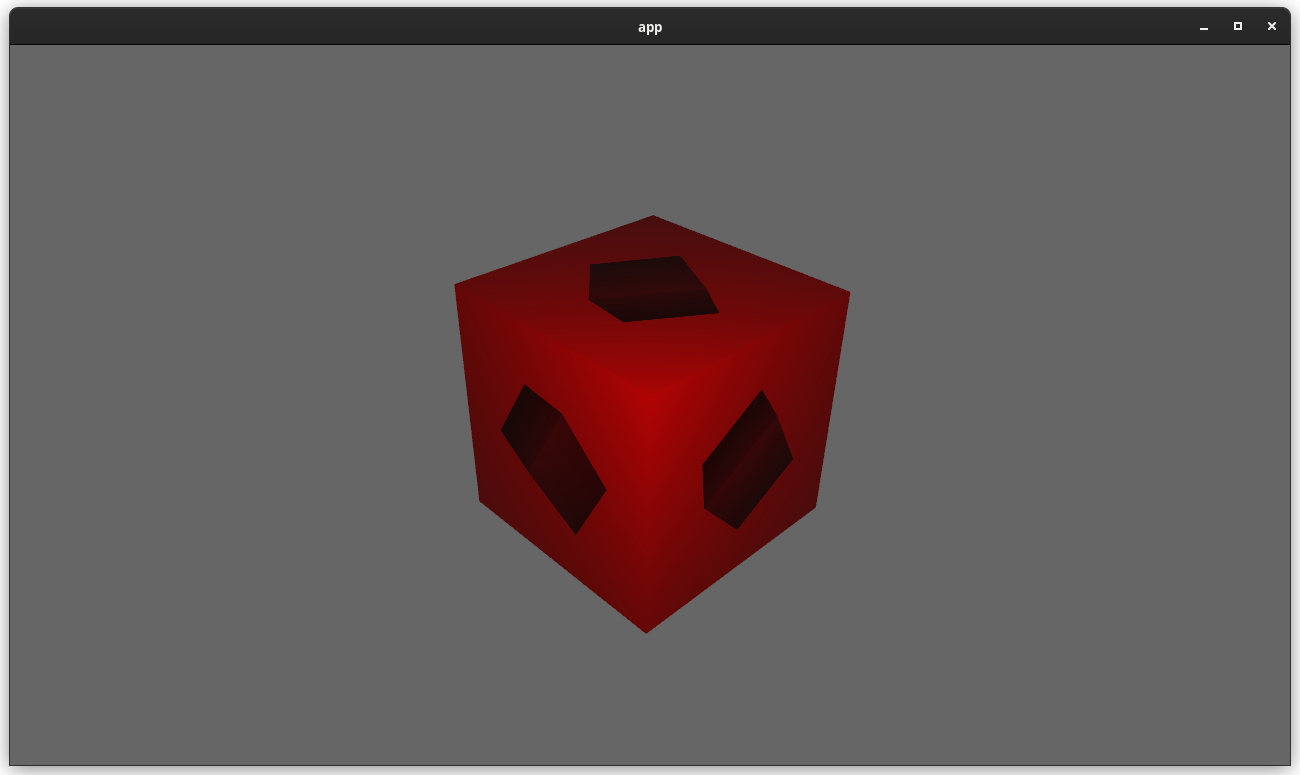
Attempt to make features like bloom https://github.com/bevyengine/bevy/pull/2876 easier to implement.
**This PR:**
- Moves the tonemapping from `pbr.wgsl` into a separate pass
- also add a separate upscaling pass after the tonemapping which writes to the swap chain (enables resolution-independant rendering and post-processing after tonemapping)
- adds a `hdr` bool to the camera which controls whether the pbr and sprite shaders render into a `Rgba16Float` texture
**Open questions:**
- ~should the 2d graph work the same as the 3d one?~ it is the same now
- ~The current solution is a bit inflexible because while you can add a post processing pass that writes to e.g. the `hdr_texture`, you can't write to a separate `user_postprocess_texture` while reading the `hdr_texture` and tell the tone mapping pass to read from the `user_postprocess_texture` instead. If the tonemapping and upscaling render graph nodes were to take in a `TextureView` instead of the view entity this would almost work, but the bind groups for their respective input textures are already created in the `Queue` render stage in the hardcoded order.~ solved by creating bind groups in render node
**New render graph:**
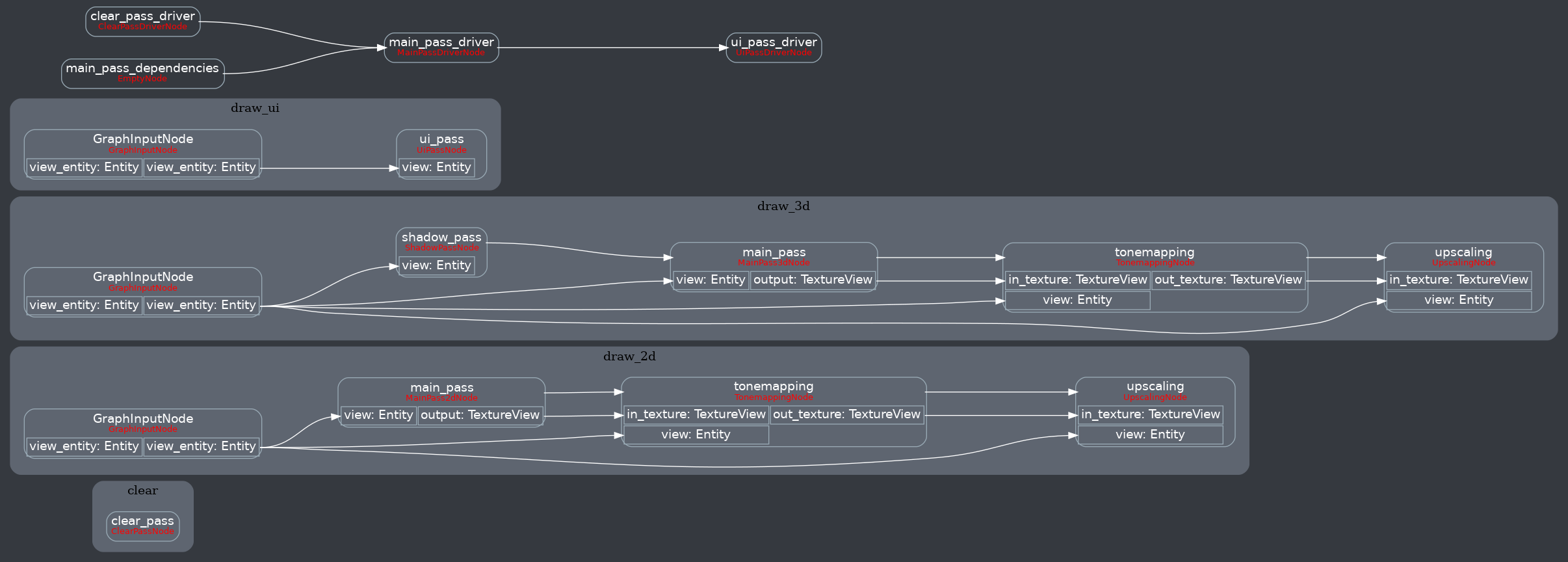
<details>
<summary>Before</summary>
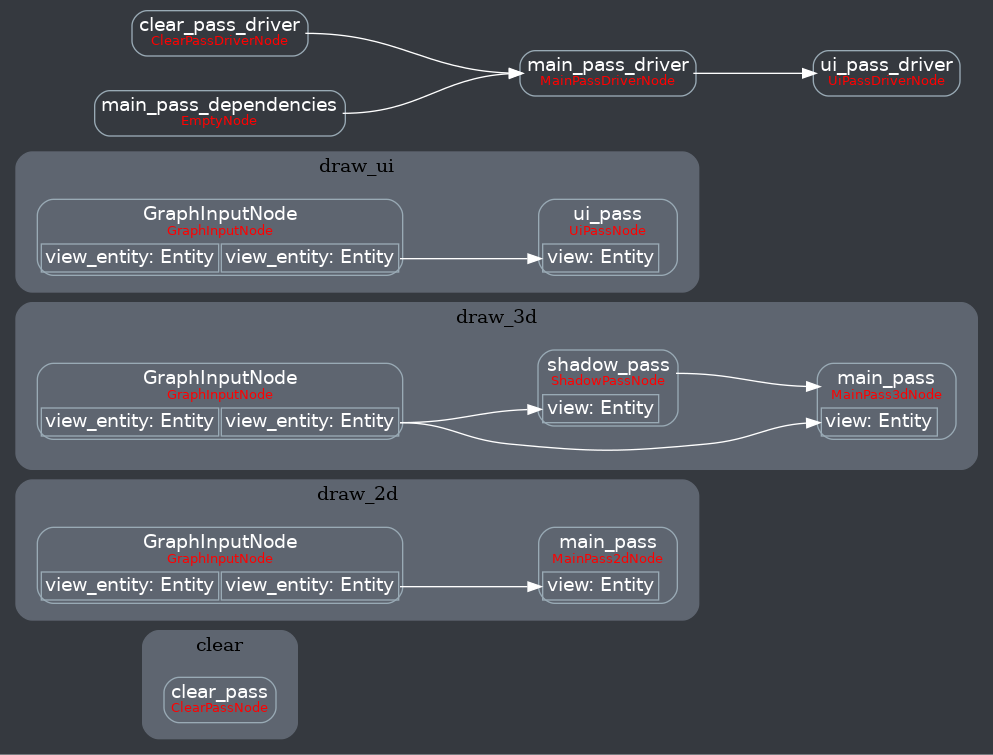
</details>
Co-authored-by: Carter Anderson <mcanders1@gmail.com>
# Objective
Take advantage of the "impl Bundle for Component" changes in #2975 / add the follow up changes discussed there.
## Solution
- Change `insert` and `remove` to accept a Bundle instead of a Component (for both Commands and World)
- Deprecate `insert_bundle`, `remove_bundle`, and `remove_bundle_intersection`
- Add `remove_intersection`
---
## Changelog
- Change `insert` and `remove` now accept a Bundle instead of a Component (for both Commands and World)
- `insert_bundle` and `remove_bundle` are deprecated
## Migration Guide
Replace `insert_bundle` with `insert`:
```rust
// Old (0.8)
commands.spawn().insert_bundle(SomeBundle::default());
// New (0.9)
commands.spawn().insert(SomeBundle::default());
```
Replace `remove_bundle` with `remove`:
```rust
// Old (0.8)
commands.entity(some_entity).remove_bundle::<SomeBundle>();
// New (0.9)
commands.entity(some_entity).remove::<SomeBundle>();
```
Replace `remove_bundle_intersection` with `remove_intersection`:
```rust
// Old (0.8)
world.entity_mut(some_entity).remove_bundle_intersection::<SomeBundle>();
// New (0.9)
world.entity_mut(some_entity).remove_intersection::<SomeBundle>();
```
Consider consolidating as many operations as possible to improve ergonomics and cut down on archetype moves:
```rust
// Old (0.8)
commands.spawn()
.insert_bundle(SomeBundle::default())
.insert(SomeComponent);
// New (0.9) - Option 1
commands.spawn().insert((
SomeBundle::default(),
SomeComponent,
))
// New (0.9) - Option 2
commands.spawn_bundle((
SomeBundle::default(),
SomeComponent,
))
```
## Next Steps
Consider changing `spawn` to accept a bundle and deprecate `spawn_bundle`.
# Objective
Implement `IntoIterator` for `&Extract<P>` if the system parameter it wraps implements `IntoIterator`.
Enables the use of `IntoIterator` with an extracted query.
Co-authored-by: devil-ira <justthecooldude@gmail.com>
# Objective
Without this we can inappropriately merge batches together without properly accounting for non-batch items between them, and the merged batch will then be sorted incorrectly later.
This change seems to reliably fix the issue I was seeing in #5919.
## Solution
Ensure the `batch_phase_system` runs after the `sort_phase_system`, so that batching can only look at actually adjacent phase items.
# Objective
- While generating https://github.com/jakobhellermann/bevy_reflect_ts_type_export/blob/main/generated/types.ts, I noticed that some types that implement `Reflect` did not register themselves
- `Viewport` isn't reflect but can be (there's a TODO)
## Solution
- register all reflected types
- derive `Reflect` for `Viewport`
## Changelog
- more types are not registered in the type registry
- remove `Serialize`, `Deserialize` impls from `Viewport`
I also decided to remove the `Serialize, Deserialize` from the `Viewport`, since they were (AFAIK) only used for reflection, which now is done without serde. So this is technically a breaking change for people who relied on that impl directly.
Personally I don't think that every bevy type should implement `Serialize, Deserialize`, as that would lead to a ton of code generation that mostly isn't necessary because we can do the same with `Reflect`, but if this is deemed controversial I can remove it from this PR.
## Migration Guide
- `KeyCode` now implements `Reflect` not as `reflect_value`, but with proper struct reflection. The `Serialize` and `Deserialize` impls were removed, now that they are no longer required for scene serialization.
# Objective
Remove unused `enum DepthCalculation` and its usages. This was used to compute visible entities in the [old renderer](db665b96c0/crates/bevy_render/src/camera/visible_entities.rs), but is now unused.
## Solution
`sed 's/DepthCalculation//g'`
---
## Changelog
### Changed
Removed `bevy_render:📷:DepthCalculation`.
## Migration Guide
Remove references to `bevy_render:📷:DepthCalculation`, such as `use bevy_render:📷:DepthCalculation`. Remove `depth_calculation` fields from Projections.
*This PR description is an edited copy of #5007, written by @alice-i-cecile.*
# Objective
Follow-up to https://github.com/bevyengine/bevy/pull/2254. The `Resource` trait currently has a blanket implementation for all types that meet its bounds.
While ergonomic, this results in several drawbacks:
* it is possible to make confusing, silent mistakes such as inserting a function pointer (Foo) rather than a value (Foo::Bar) as a resource
* it is challenging to discover if a type is intended to be used as a resource
* we cannot later add customization options (see the [RFC](https://github.com/bevyengine/rfcs/blob/main/rfcs/27-derive-component.md) for the equivalent choice for Component).
* dependencies can use the same Rust type as a resource in invisibly conflicting ways
* raw Rust types used as resources cannot preserve privacy appropriately, as anyone able to access that type can read and write to internal values
* we cannot capture a definitive list of possible resources to display to users in an editor
## Notes to reviewers
* Review this commit-by-commit; there's effectively no back-tracking and there's a lot of churn in some of these commits.
*ira: My commits are not as well organized :')*
* I've relaxed the bound on Local to Send + Sync + 'static: I don't think these concerns apply there, so this can keep things simple. Storing e.g. a u32 in a Local is fine, because there's a variable name attached explaining what it does.
* I think this is a bad place for the Resource trait to live, but I've left it in place to make reviewing easier. IMO that's best tackled with https://github.com/bevyengine/bevy/issues/4981.
## Changelog
`Resource` is no longer automatically implemented for all matching types. Instead, use the new `#[derive(Resource)]` macro.
## Migration Guide
Add `#[derive(Resource)]` to all types you are using as a resource.
If you are using a third party type as a resource, wrap it in a tuple struct to bypass orphan rules. Consider deriving `Deref` and `DerefMut` to improve ergonomics.
`ClearColor` no longer implements `Component`. Using `ClearColor` as a component in 0.8 did nothing.
Use the `ClearColorConfig` in the `Camera3d` and `Camera2d` components instead.
Co-authored-by: Alice <alice.i.cecile@gmail.com>
Co-authored-by: Alice Cecile <alice.i.cecile@gmail.com>
Co-authored-by: devil-ira <justthecooldude@gmail.com>
Co-authored-by: Carter Anderson <mcanders1@gmail.com>
> In draft until #4761 is merged. See the relevant commits [here](a85fe94a18).
---
# Objective
Update enums across Bevy to use the new enum reflection and get rid of `#[reflect_value(...)]` usages.
## Solution
Find and replace all[^1] instances of `#[reflect_value(...)]` on enum types.
---
## Changelog
- Updated all[^1] reflected enums to implement `Enum` (i.e. they are no longer `ReflectRef::Value`)
## Migration Guide
Bevy-defined enums have been updated to implement `Enum` and are not considered value types (`ReflectRef::Value`) anymore. This means that their serialized representations will need to be updated. For example, given the Bevy enum:
```rust
pub enum ScalingMode {
None,
WindowSize,
Auto { min_width: f32, min_height: f32 },
FixedVertical(f32),
FixedHorizontal(f32),
}
```
You will need to update the serialized versions accordingly.
```js
// OLD FORMAT
{
"type": "bevy_render:📷:projection::ScalingMode",
"value": FixedHorizontal(720),
},
// NEW FORMAT
{
"type": "bevy_render:📷:projection::ScalingMode",
"enum": {
"variant": "FixedHorizontal",
"tuple": [
{
"type": "f32",
"value": 720,
},
],
},
},
```
This may also have other smaller implications (such as `Debug` representation), but serialization is probably the most prominent.
[^1]: All enums except `HandleId` as neither `Uuid` nor `AssetPathId` implement the reflection traits
# Objective
- Added a bunch of backticks to things that should have them, like equations, abstract variable names,
- Changed all small x, y, and z to capitals X, Y, Z.
This might be more annoying than helpful; Feel free to refuse this PR.
Remove unnecessary calls to `iter()`/`iter_mut()`.
Mainly updates the use of queries in our code, docs, and examples.
```rust
// From
for _ in list.iter() {
for _ in list.iter_mut() {
// To
for _ in &list {
for _ in &mut list {
```
We already enable the pedantic lint [clippy::explicit_iter_loop](https://rust-lang.github.io/rust-clippy/stable/) inside of Bevy. However, this only warns for a few known types from the standard library.
## Note for reviewers
As you can see the additions and deletions are exactly equal.
Maybe give it a quick skim to check I didn't sneak in a crypto miner, but you don't have to torture yourself by reading every line.
I already experienced enough pain making this PR :)
Co-authored-by: devil-ira <justthecooldude@gmail.com>